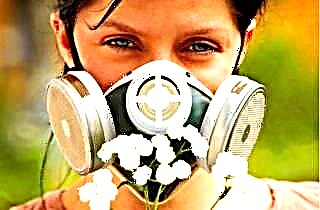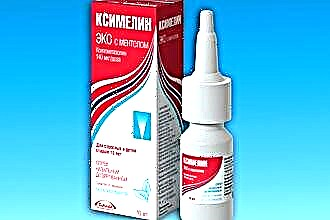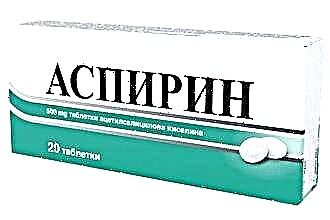Swelling of the nose with a runny nose can occur due to colds and other diseases. In this condition, it is important not only to relieve the symptoms, but also to eliminate the cause that provoked them. Only a doctor can make a correct diagnosis after examining the patient and studying laboratory tests. Effective therapy will help get rid of the disorder in just 7-10 days, but in some cases, longer treatment and even surgery are required.
Why does it appear
 Swelling of the nose occurs due to the development of pathological processes in the body. When pathogens enter the surface of the mucous membrane, a defense mechanism is triggered. The circulatory system transports antibodies to the focus of infection, due to high pressure, the vessels and capillaries swell, fluid from them seeps into the intercellular space, which causes edema.
Swelling of the nose occurs due to the development of pathological processes in the body. When pathogens enter the surface of the mucous membrane, a defense mechanism is triggered. The circulatory system transports antibodies to the focus of infection, due to high pressure, the vessels and capillaries swell, fluid from them seeps into the intercellular space, which causes edema.
The mucous membrane at this time also tries to protect the body, it begins to actively produce a secret to cleanse the nasal cavity of foreign bodies and microorganisms. As a result, a severe runny nose appears. The discharge may be transparent, but if a bacterial infection has joined, it acquires a yellow or greenish tint and an unpleasant odor.
The reasons for the development of pathology
Various diseases and disorders in the body can cause swelling in the nose. Depending on the cause, they choose a drug that removes puffiness and means to eliminate the underlying cause. Let us consider in more detail why this condition occurs.
- The common cold is of a viral nature. When the protective functions are weakened, viruses easily penetrate the mucous membrane and cause an inflammatory process in it. At this time, mucus begins to flow profusely and nasal congestion is felt. Other symptoms are characteristic of such diseases, such as fever, headache, chills, sore throat, decreased ability to work.
 Bacterial infection. It can occur both independently and against the background of a viral infection, since the protective functions of the body are reduced. Bacteria colonize not only the nasal cavity, but also the paranasal sinuses, which causes sinusitis. The discharge has a characteristic yellowish tint due to the presence of purulent masses. On the 5-6th day, the mucus becomes very viscous, therefore it is rather difficult to blow your nose. Such disorders are characterized by swelling of the face, especially when it comes to sinusitis, headaches, fever, deterioration of vision or hearing.
Bacterial infection. It can occur both independently and against the background of a viral infection, since the protective functions of the body are reduced. Bacteria colonize not only the nasal cavity, but also the paranasal sinuses, which causes sinusitis. The discharge has a characteristic yellowish tint due to the presence of purulent masses. On the 5-6th day, the mucus becomes very viscous, therefore it is rather difficult to blow your nose. Such disorders are characterized by swelling of the face, especially when it comes to sinusitis, headaches, fever, deterioration of vision or hearing.- Allergic rhinitis. Inhalation allergens cause swelling of the nasal mucosa. The violation appears periodically, only during the flowering of some plants or contact with other agents. At this time, the patient not only feels a stuffy nose, he has tearing, swollen eyelids, a sore throat is felt and sneezing begins.
- Polyposis. The overgrown nasal mucosa forms polyps in the cavity. The pathology is not fully understood, therefore doctors cannot give an unambiguous explanation for this phenomenon. Since the process of tissue transformation takes a long time, a runny nose and swelling appear gradually and intensify over time.
- Anatomical features. Narrow nasal passages, curved septa and other imperfections in the structure of the nose can lead to a disorder. How to remove the edema in such cases, the doctor decides, most often an operation is prescribed to correct the defects.
- Hormonal disbalance. Basically, this disorder occurs in pregnant women. During gestation, the body undergoes a complete hormonal change, which can cause a runny nose and nasal congestion. Before removing the swelling in this case, you need to consult a doctor, since expectant mothers cannot use most of the drugs.
- Injuries. Accidental injury and surgery can cause disruption of the mucous membrane. Patients often have difficulty breathing after surgery or bruising. However, these symptoms resolve immediately after full recovery.
Troubleshooting methods
Before removing the swelling of the nose, you need to make sure that the cause of its appearance is identified correctly. Different methods are used in different cases. Let's get to know them in more detail.
With the viral nature of the violation
 You can eliminate the disease itself with the help of antiviral drugs (etiological treatment) or symptoms (symptomatic treatment). Despite the fact that pharmacies are overflowing with funds for fighting viral infections, it is best to quickly eliminate unpleasant symptoms and give the body the opportunity to cope with the disease on its own. The fact is that antiviral drugs for the most part are just immunomodulators, which only increase the protective barrier, the effect will be only if you take the medicine in the first hours of the development of the disease. You can relieve mucosal edema with the help of vasoconstrictor drops and sprays:
You can eliminate the disease itself with the help of antiviral drugs (etiological treatment) or symptoms (symptomatic treatment). Despite the fact that pharmacies are overflowing with funds for fighting viral infections, it is best to quickly eliminate unpleasant symptoms and give the body the opportunity to cope with the disease on its own. The fact is that antiviral drugs for the most part are just immunomodulators, which only increase the protective barrier, the effect will be only if you take the medicine in the first hours of the development of the disease. You can relieve mucosal edema with the help of vasoconstrictor drops and sprays:
- "Naphtizin";
- Rinofluimucil;
- Galazolin;
- Xymelin, etc.
With a bacterial genesis of a violation
When a bacterial infection has developed, vasoconstrictors cannot fully cope with the violation, the bacteria themselves that led to the disease need to be eliminated. Cleaning the nose from mucus and taking drops and sprays that relieve swelling should be alternated with the use of bactericidal and bacteriostatic drugs:
- "Bioparox";
- Miramistin;
- Isofra;
- "Polydexa".
These funds do an excellent job not only with transparent, but also with purulent discharge. They disinfect mucous membranes, can relieve inflammation, protect against re-infection, and help prevent the development of sinusitis.
With an allergic nature of the disorder
You can deal with the manifestations of allergies with the help of two groups: topical glucocorticosteroids and antihistamines. The first group refers to hormonal drugs. Despite consumer concerns, they are completely safe for health. Due to the local effect, drugs are not absorbed into the bloodstream and do not cause dependence; they are included in all modern treatment regimens offered by leading European specialists. These include:
- Fliksonase;
- "Nazonex";
- Avmis.
Antihistamines have long been used in medical practice to relieve allergy symptoms. The drugs of the old generation have a sedative effect, which is why they cannot be taken by people working with complex mechanisms, motorists and those who lead an active lifestyle. There are also new medications that do not cause drowsiness:
- Claritin;
- "Zyrtek".
Let's summarize
Swelling of the nasal mucosa in most cases is accompanied by a runny nose. A variety of disorders and diseases can cause this condition. The most effective therapy is chosen depending on the cause.
In some cases, it will be enough only to eliminate the symptoms, but sometimes systemic treatment is required. Most often, doctors recommend vasoconstrictor drugs that remove puffiness immediately after use. However, remember that they cannot be used for more than 7 days, this causes negative consequences.

 Bacterial infection. It can occur both independently and against the background of a viral infection, since the protective functions of the body are reduced. Bacteria colonize not only the nasal cavity, but also the paranasal sinuses, which causes sinusitis. The discharge has a characteristic yellowish tint due to the presence of purulent masses. On the 5-6th day, the mucus becomes very viscous, therefore it is rather difficult to blow your nose. Such disorders are characterized by swelling of the face, especially when it comes to sinusitis, headaches, fever, deterioration of vision or hearing.
Bacterial infection. It can occur both independently and against the background of a viral infection, since the protective functions of the body are reduced. Bacteria colonize not only the nasal cavity, but also the paranasal sinuses, which causes sinusitis. The discharge has a characteristic yellowish tint due to the presence of purulent masses. On the 5-6th day, the mucus becomes very viscous, therefore it is rather difficult to blow your nose. Such disorders are characterized by swelling of the face, especially when it comes to sinusitis, headaches, fever, deterioration of vision or hearing.

